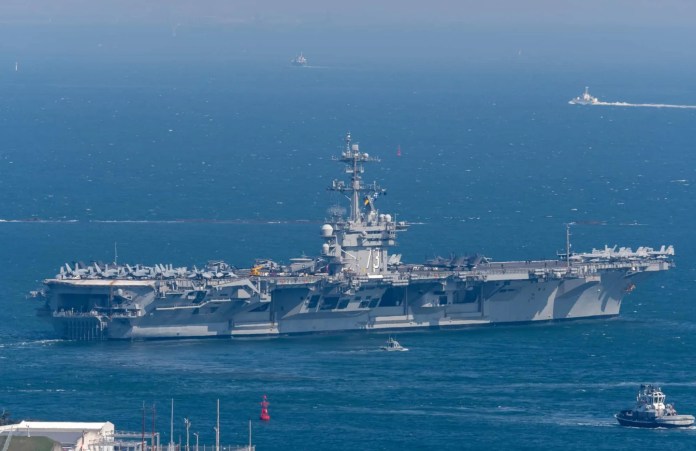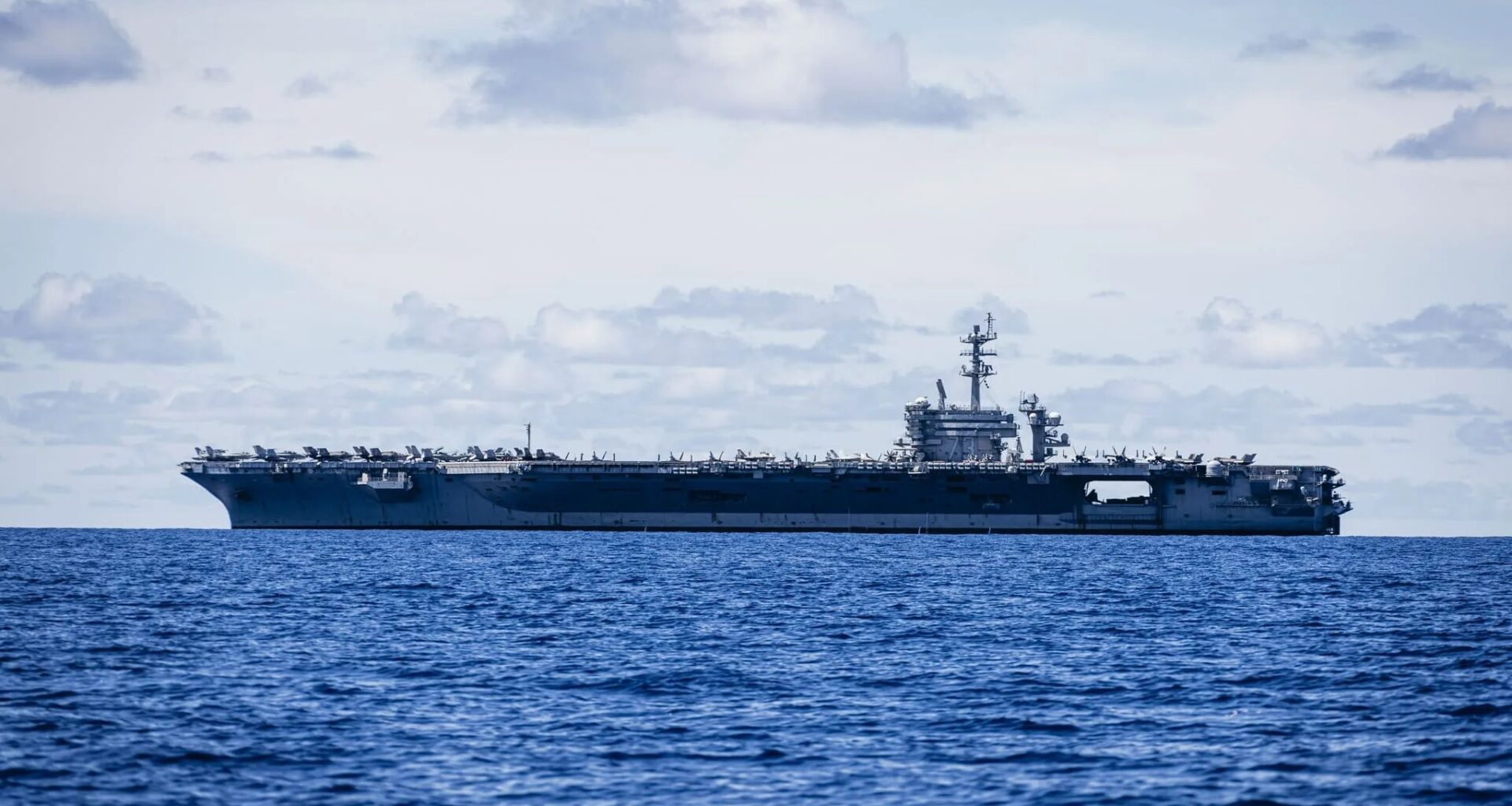Towards the end of last week, North Korea issued warnings to the United States following the announcement of the nuclear-powered aircraft carrier USS George Washington and its Strike Group operating in the waters of neighboring South Korea, as well as visits by high-ranking officials, including the U.S. Secretary of War, Pete Hegseth. Specifically, the arrival of the carrier and its escort at the port of Busan occurred on the 5th of this month, just two days after a meeting between U.S. and South Korean defense officials.
 El secretario de guerra Pete Hegseth en una visita reciente al portaaviones USS George Washington
El secretario de guerra Pete Hegseth en una visita reciente al portaaviones USS George Washington
Referring to this deployment, Captain Tim Waits, the current commander of the carrier, stated: “Our first year back as the U.S. Navy’s primary permanently deployed aircraft carrier would not be complete without a visit to Busan and meetings with our historical friends and allies of the Republic of Korea. I am extremely grateful for the hospitality we received in Busan, as well as the opportunities we had to work and train alongside the Republic of Korea Navy.”
The visit he referred to lasted for five days, while the group of ships escorting the George Washington during its transit included the destroyers USS Milius (DDG-69) and USS Shoup (DDG-86), along with the cruiser USS Robert Smalls (CG-62).
In response to this deployment, North Korean Defense Minister No Kwang Chol issued the aforementioned complaints from Pyongyang, delivering a protest message accusing the U.S. of becoming “brazen” in its military activities and attempting to destabilize the fragile regional situation. He further stated that Secretary Hegseth’s visit to the demilitarized zone, alongside his South Korean counterpart, was intended to “stir up war hysteria” and could be nothing other than a “conspiracy” against North Korea. A fragment of his own words reads: “This is a forceful revelation and an intentional expression of their hostile nature to oppose the DPRK to the end.”

In a later stage of his statements, the North Korean defense minister claimed that all demonstrations of power considered a threat to the country would be met with more offensive actions, in an effort to “guarantee security and defend peace through a powerful force.” Supporting this claim, it is worth noting that North Korea has conducted new tests with its short-range ballistic missiles, marking the sixth time this year such launches have occurred. According to initial South Korean reports, the missile launched traveled a total of 700 kilometers toward the East Sea, while Japanese sources reported a slightly shorter distance exceeding 450 kilometers.
As often happens following such events, the United States, Japan, and South Korea countered North Korea’s accusations regarding its “attempts to destabilize” the region, adding that actions of this type represent a blatant violation of United Nations sanctions imposed on the country. However, beyond the concerning message implied by such a move, it was quickly confirmed that the launch did not pose an immediate threat to the security of allied forces, who have maintained close communication to monitor the event.
Cover image for illustrative purposes
You might also be interested in: North Korea Successfully Tests New Hwasong-11E Hypersonic Missile
